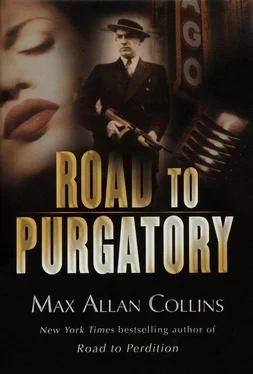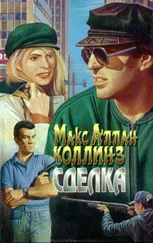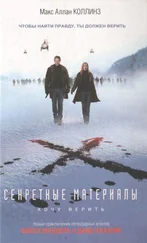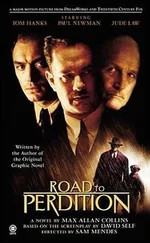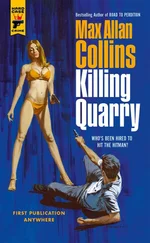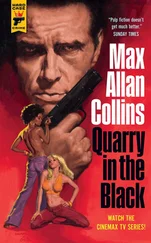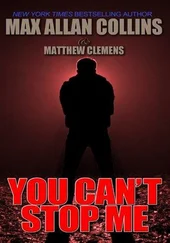No, Michael O’Sullivan, Jr., had never allowed himself to love the Satarianos.
And it was too late to start now — now that an old hatred had renewed itself to fill him with new purpose.
At the turn of the century, the ten-story Hotel Lexington at Twenty-second Street and South Michigan had been among Chicago’s most stellar. The imposing hotel — with its turreted corners and bay windows and lofty lobby — had played host to President Grover S. Cleveland when he came to town to open the Columbian Exposition in 1893.
But since 1928, the Lexington had become better known for playing host to Al Capone, who controlled the Century of Progress Exposition in ’33. For many years the Capone organization monopolized the third, fourth, and fifth floors, the latter reserved for women who serviced the mobsters and their guests. A ten-room suite on the fourth had been Capone’s — his living quarters and his offices, supplanted with hidden panels, moving walls, and silent alarms.
After Snorky (as Capone’s intimates referred to him) was sent away by feds like Eliot Ness and Elmer Irey, the Outfit (as they were locally known) scaled itself back, assuming a more low-key posture in the community, their presence at the Lexington lessening considerably. Subtracting Capone’s former living quarters, the suite of offices on the fourth floor was halved, the third and fifth floors long since returned to the hotel for its own devices.
As Frank Nitti walked across the black-and-white mosaic tile floor of the Lexington, a pair of bodyguards fore and aft, he found the grand old hotel looking sadly long in the tooth. The overstuffed furnishings were threadbare, the potted plants neglected; only the mob’s cigar stand, which was also a bookie joint, seemed prosperous.
Nitti much preferred to do business out of his suite at the Bismarck Hotel, conveniently across from city hall and footsteps away from the Capri Restaurant, out of which he also worked; the Lexington had outlived its usefulness (of course, as the gangster knew all too well, some might say the same about Frank Nitti).
At five eight, Nitti was smaller than all four men accompanying him. He wore no hat, his hair well-trimmed, slicked back, parted at the left, touched with gray at the temples; average of build, he did not appear physically imposing, though he took confident strides. In the perfectly tailored gray suit with the dark gray tie, he looked like the smooth business executive he was, albeit one with a roughly handsome face, lower lip flecked with scar tissue, eyes dark and alert. He was not carrying a gun. The bodyguards were.
The impeccable grooming of the small, dapper man still known to many as the Enforcer reflected a former profession: barber. He had cut hair and provided close shaves in his cousin Alphonse Capone’s old neighborhood in Brooklyn, in the early ’20s. Occasionally he had not shaved but cut a throat, and — imported to Chicago by Al as a bomber and assassin — Nitti had earned respect for cold-blooded violence, though his rise in the Outfit was due more to his business brains and organizational skills.
Appointed by Capone as chairman of the board, for the duration of Snorky’s prison term, Nitti had avoided the headline-provoking brutality of his chief; he had ruled calmly and fairly, and no turf wars to speak of had broken out during his tenure. He considered himself a captain of industry, and had replaced bootlegging with unionism.
Yet here he was, still holding court in the infamous Lexington, whose art-moderne aura spoke of the ’20s and ’30s, not the ’40s, not today. But wasn’t that the point? The psychological link to the old days — to Al — that the suite of offices on the fourth floor represented could not be underestimated. And anyway, his Bismarck suite did not include a boardroom.
Half an hour later, Nitti sat at the head of the long well-polished table; several pitchers of iced water were positioned around, and glass ashtrays for the various cigars and cigarettes of Nitti’s five guests, who took up only half of the available seats. The room was air-conditioned and, like so many late associates of the men at this table, well-ventilated.
On the wall behind Nitti were three oil paintings, two of which had been in Al’s office in the old days: George Washington and Abraham Lincoln. The third, over a fireplace whose mantel was decorated by various civic awards for their absent leader’s philanthropy in the Depression, loomed a distinguished three-quarters view of Capone himself — without his trademark Borsalino, his scars hidden from view.
Seated at the long dark-oak table were five of the top Outfit capos in Chicago.
At Nitti’s right hand sat Paul Ricca — pale, thin, white-haired, with high cheekbones, long narrow nose, and slash of a mouth in a placid expression belied by dark dead eyes; he wore a crisp brown suit and a blood-red tie, and smoked a cigarette. Nicknamed “the Waiter,” after a profession he had rarely ever pursued (other than when filling in “occupation” on a form), Ricca had been Capone’s bodyguard and was now Nitti’s underboss.
Ricca was famous for killing two guys in Sicily, going to prison for it, then on the day he got out, killing the eyewitness. Theoretically Nitti’s top aide, the Waiter (the Enforcer knew all too well) was angling for the top chair.
Next to Ricca sat Charlie Fischetti — stocky, white-haired, handsome, as impeccably attired as Nitti in his own gray suit and a hand-signed Salvador Dalí necktie. Fischetti, one of three brothers in the Outfit, oversaw gambling and nightclubs. Nitti trusted Fischetti, who agreed about the need to move into legitimate concerns, encouraging mob investment on Wall Street and in Texas oil.
At Fischetti’s right was slender, perpetually smirky Murray Humphreys, in charge of labor unions, cleaning plants, and laundries; Humphreys was also a master fixer of politicians. Another spiffy, dashing gangster, Murray the Camel was the Outfit intellectual: he’d graduated high school. The only non-Sicilian at the table... in fact, the only Welshman in the Outfit,... Hump was valued by all, despite his outsider’s inability to become a “made” man.
On the other side of the table, at Nitti’s left, sat Louis “Little New York” Campagna, the Enforcer’s most trusted associate, a short blocky man in an off-the-rack brown suit, with cold dark eyes in a lumpy mashed-potatoes face with perpetual five o’clock shadow. Imported from NYC in ’27 by Al himself, Campagna handled enforcement for Nitti — from those personal bodyguards who’d come up with him in the elevator, to any points that needed making related to any of their business concerns.
Next to Campagna sat Tony Accardo, a roughneck dubbed Joe Batters by Capone for the thug’s abilities with a baseball bat (off the diamond, of course). A big man with an oval face, sad eyes crowding a bulbous nose, Accardo wore a blue suit and lighter blue tie, nothing fancy but nicely respectful, coming from a guy who preferred sportshirts and slacks. In addition to running West Side gambling, Accardo was often called upon by Campagna for heavy stuff.
Despite the long table and the boardroom trappings, this was not a meeting of the “board.” Around ten gangsters had gambling territories (like Accardo’s) and numerous other Outfit associates had varied responsibilities — Capone’s look-alike brother Ralph (“Bottles”) took care of soft drinks and tavern supplies; Eddie Vogel had the slots, cigarette machines, and vending machines; Joe Fusco had liquor distribution (legal, now); and Jake Guzik remained treasurer. Seldom were all these figures gathered at once.
But these five were key players, and Frank Nitti had summoned them because he had important business to discuss.
Читать дальше
